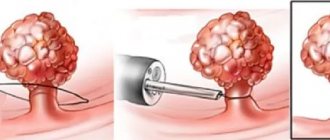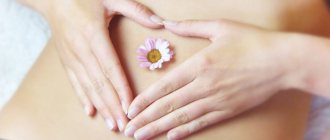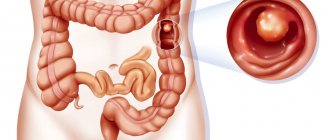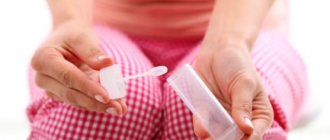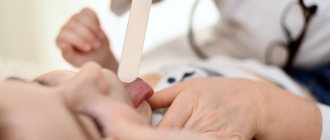Dietary recommendations for diarrhea, constipation and flatulence
What is intestinal dysbiosis?
This is a disruption of the normal microflora in any part of the intestine and its replacement with the so-called opportunistic flora (fungi, staphylococci, Proteus, streptococci, Pseudomonas aeruginosa, etc.).
Causes of intestinal dysbiosis:
– various diseases of the gastrointestinal tract of infectious and non-infectious nature (pancreatitis, cholecystitis, gastritis, colitis, helminthic and parasitic infestations, etc.); – the period after acute viral and bacterial infections, including non-intestinal localization; – chronic inflammatory and allergic diseases; – radiation sickness, leukemia and other malignant processes, post-radiation syndrome; – use of antibiotics and cytostatics. These dysbacterioses are the most stable and can have serious consequences.
This disease manifests itself in different ways, most often with the following symptoms: frequent loose stools (diarrhea)
or, on the contrary,
constipation,
or alternating both. Nevertheless, there are general principles of diet for patients with dysbiosis.
Diet for dysbiosis
Back to list Previous article Next article
14.05.2012
Tags:
bifidobacteria, dysbacteriosis, lactobacilli
Any problems associated with stool - diarrhea or constipation - indicate dysbacteriosis . One of the reasons for its appearance may be poor nutrition, which is why diet contributes to effective treatment.
Dysbacteriosis is a functional disturbance in the composition and quantitative ratio of intestinal microflora, towards an increase in pathogenic flora and its toxins. As a result, there is a disruption of the digestive processes, absorption of nutrients and nutrients, a decrease in immune reactivity, and weakening of the body, both in adults and children. With timely and competent restoration of microflora, there is an improvement in the function of the liver, intestines, immunity, and general well-being.
It is necessary to adhere to the well-known rules of healthy eating :
- You need to eat food at a strictly defined time, in accordance with the recommendations of your doctor. The body gets used to the same time and regimen, then by the next meal enzymes and food juices are normally released, which has a beneficial effect on digestion and health. The time between meals should be approximately the same - 2-3 hours;
- You can’t overeat - every healthy body has a limit to its digestive capabilities, i.e. the amount of food that he is able to digest at one time;
- It is important to chew food for a long time, thoroughly - at least 32 times each piece. The food will be sufficiently crushed, while saliva will moisten it and prepare it for the further process of digestion.
- At the same time, be sure to take vitamins and minerals that you don’t get from food. They are necessary for the proper functioning of all body systems.
In case of dysbacteriosis, dietary habits depend on the degree and nature of its manifestation. In case of severe fermentation and gas formation, it is necessary to exclude from the diet milk, sweets, white cereals (rice, semolina), fresh white bread, raw vegetables (no fresh cabbage), fruits - they contain a lot of carbohydrates, also baked, fatty, spicy, salty foods . The best thing is lean boiled meat, fish, with a side dish of buckwheat porridge, bran bread, bio-kefir, any greens. It is useful to eat pureed or baked apples, which have an astringent effect, reduce fermentation and are a good nutrient medium for intestinal microflora.
With putrefactive dyspepsia, you need to limit protein foods. It is healthy to eat vegetables in any form, fruits, berries, and dairy products. Apricots and cranberries will bring great benefits. In case of diarrhea, special attention should be paid to taking functional nutrition products (biological drink Harmony of Life ) - here they will be extremely useful. If you have diarrhea , you should exclude: fatty meat, fish, canned food, pickles, smoked meats, mushrooms, sweets, baked goods, baked goods, raw vegetables, fruits. We recommend weak broths, porridges enriched with fiber, jelly, and compotes. Food is steamed. Don't eat too hot food.
Constipation can be relieved with fiber-rich foods. It is necessary to remove fatty, fried foods, marinades, pickles, smoked foods, and spices (horseradish, garlic, radish) from the diet. Shown: pumpkin in any form, zucchini, beets, cabbage salads, i.e. vegetables, fruits (not sour), cereals - rich in fiber, wheat bran, rye and bran bread. It is necessary to consume foods containing proteins (meat, fish) and carbohydrates (potatoes, cereals) separately,
It is important to remember that with long-term dysbacteriosis or chronic colitis, fiber in fresh vegetables and fruits can irritate the intestinal mucosa, so they should be consumed stewed or boiled.
Considering the pathogenic pathogen, it is necessary to include in the diet for staphylococcal dysbiosis : strawberries, raspberries, rowan, blueberries, garlic; for candidiasis : lingonberries, mint, thyme, fennel, wild garlic, capsicum, cinnamon, cloves, chicory, bay leaf, carrots; Protean : apricots, cranberries, onions, raspberries, currants, garlic; for putrefaction : lingonberries, currants, caraway seeds; for Pseudomonas aeruginosa: sweet red pepper, black currants.
Taking dietary supplements - probiotics, synbiotics containing lacto- and bifidobacteria or their metabolic products will help not only restore the normal intestinal flora, your own beneficial microflora, but also normalize metabolism, digestion, immunity, liver and intestinal function, improve well-being and quality life.
Synbiotic biocomplexes Normoflorins, containing live active lacto- and bifidobacteria, secreting lactic, acetic, butyric, propionic acids, which have a protective, antiseptic, anti-inflammatory, sorption, enzymatic, nutritional effect on the mucous membranes - reduces intoxication, improves digestion, intestinal motility, liver function, increases immune reactivity. This helps in the fight against pathogenic microflora, restores the functioning of the gastrointestinal tract, overall well-being, and improves immunity.
Scheme (age dosages for children or adults): (adult) normoflorin L - 20 ml (for diarrhea) - 40 (for constipation) ml in the morning before meals, D - 40 ml in the evening 20 minutes before meals, B - 20-30 ml at night in an enema. For diarrhea, you can add D - 30-40 ml at lunch, for constipation at lunch + L - 30-40 ml.
The course of taking Normoflorins is 1-1.5 months, repeated 2-3 times a year, to remove toxins, pathogenic microflora, and restore beneficial own bacteria. The unique composition of normoflorins, which does not contain cow's milk proteins, milk sugar, or preservatives, allows it to be successfully used in children from the first days of life, pregnant women, lactating women, patients with diabetes, allergic diseases, i.e. in adults with any concomitant pathology.
Dietary nutrition for dysbiosis is selected individually, depending on age, complex of diseases and disorders, according to the person’s food preferences and desires, because coercion (even the most reasonable) can cause harm.
A diet for intestinal dysbiosis should be followed for at least a month (proper nutrition throughout your life), after complete recovery, and functional nutrition products (Harmony of Life) should be present in your diet every day for at least 3 months - after all, they are the key to your health.
Back to list Previous article Next article
Diet to improve the composition of microflora in the presence of diarrhea
| Type of products | Can | It is forbidden |
| Bread and flour products | White bread, dried yesterday, toast, wheat crackers | Rye bread with bran Baked goods, pizza Pasta |
| Sweet dishes | Dry unsweetened cookies Sweets Jelly | Chocolate, candy Jam Honey |
| Cereals | Buckwheat, rice, oatmeal | Millet, pearl barley, barley |
| Dairy | Cottage cheese (low-fat, baked, steamed cheesecakes, steam soufflé) Low-fat cheese and sour cream | Whole milk, cream, yoghurts (Activia), kefir (Actimel), fermented baked milk |
| Vegetables | Carrots, zucchini, pumpkin, leeks, broccoli (boiled, stewed, baked, steamed) | Cabbage, beets, turnips, spinach, sorrel (raw, pickled, fried, grilled, salted, frozen, pickled) |
| Conservation | Salted, pickled, spicy, smoked, pickled | |
| Fruits | Blueberries, pear, baked or mashed apple, dogwood, quince, bird cherry (jelly, jelly, baked) | Raw, sour fruits and berries Citrus, grapes, apricot, plum, pear, peach, banana Dried fruits |
| Beverages | Tea, weak black coffee, warm jelly and decoctions of rosehip, blueberry, bird cherry, black currant, dogwood, quince | Vegetable and fruit juices Compotes, kvass Coffee with milk, cocoa, chocolate Milkshake Carbonated drinks |
| Spices, sauces, additives | Parsley, cinnamon, cloves, chicory, turmeric | Mayonnaise, ketchup, vinegar, adjika, sauces, hot peppers (red, black) |
| First meal | In low-fat, weak meat or fish broth with the addition of mucous decoctions of cereals, semolina, rice, boiled and pureed meat, steamed quenelles and meatballs, egg flakes | Soups on strong, primary meat, fish, mushroom broths Vegetable, dairy, cereal soups, cabbage soup, borscht |
| Fish | Low-fat varieties boiled, stewed, baked, steamed, in pieces and chopped (quenelles, meatballs, cutlets) - pike perch, navaga, catfish, carp, perch, cod, hake, pike, pollock, trout, etc. | Fatty fish (sturgeon, salmon, tuna, sardines, mackerel, stellate sturgeon, beluga, lamprey, flounder, fatty herring, eel, pink salmon) Caviar |
| Bird | Chicken, turkey without skin (boiled, stewed, baked, steamed) | Duck, goose, game |
| Meat | Beef, rabbit, lean pork (boiled, stewed, steamed) | Lamb, fatty pork, horse meat |
| Eggs | As part of dishes, steam omelet no more than 1 time per week | Fried, raw, soft-boiled, hard-boiled |
| Fats | Fresh butter in very limited quantities (5 g per serving of the finished dish) | Vegetable (sunflower, corn, olive) Animal and cooking fats |
| Alcohol | Cahors up to 300 ml per week (no more than 50 ml per day) | Prohibited |
Diet Basics 4
Before moving on to talking about permitted and prohibited products, you need to understand a few basic rules:
1. Meals should be fractional. Food is taken 4-5 times a day in small portions.
2. The daily calorie intake is approximately 2000 kcal. In case of severe diarrhea and threat of exhaustion, these figures can be increased to 3000 kcal.
3. The consumption of vegetables and fruits rich in fiber is strictly limited, as they contribute to the development of inflammatory processes and cause fermentation in the intestines.
4. It is imperative to adhere to the drinking regime in order to prevent dehydration due to prolonged stool disorder (1.5 liters per day).
5. To avoid trauma to the gastric mucosa, it is necessary to follow three principles of sparing: thermal, mechanical and chemical. This means that the daily menu should consist of pureed or liquid dishes at a comfortable temperature with the complete exclusion of products that have a strong taste (spicy, sour, smoked, etc.). Preferred cooking methods are steaming, boiling and stewing.
6. Eliminate milk from the diet. Porridge is cooked only in water.
7. For soups, use vegetable or weak meat broths.
8. It is better to give preference to minced meat dishes.
9. Vegetables are served heat-treated in the form of purees or as part of soups.
Let's deal with fermented milk?
To restore normal microflora, doctors recommend using, together with biological products, functional fermented milk products with “live” bifidobacteria introduced into them (bio-yoghurts, bio-kefirs, etc.). If a child is given them daily, then a sufficient number of living cells of lactic acid bacteria accumulate in his body. They attach to the walls of the intestine from the inside, filling the entire surface, and create a kind of protective “film” through which pathogens cannot break through. In addition, lactic acid bacteria create an unfavorable environment for dangerous intestinal inhabitants, in which they cannot actively reproduce.
In case of microflora disorders, children's biological products are preferable, although in principle, after three years, the child can also be given “adult” ones. What are the advantages of children's? They are produced only from premium milk; very strict requirements are also imposed on starter cultures, because fermented milk products containing live bacteria are not subject to sterilization. Another plus is that they have a lower acidity level than “adult” ones, so they are better tolerated by the child’s sensitive digestive system.
You should pay attention to the following indicators:
the concentration of living microorganisms in a fermented milk product must be at least 107 CFU/g of product (CFU - colony-forming units); shelf life: products containing live bacteria can be stored for no more than 1 month; Some bio-yogurts are enriched not only with beneficial microorganisms, but also with prebiotics.
To correct microflora, you need yoghurts without fruit or berry additives, flavorings, emulsions, etc. If the child does not like their taste, you can add jam, preserves, pieces of sweet berries and fruits, but it is better not to use sugar - it can cause bloating .
Dietary rules after treatment with antibacterial drugs
A diet after taking antibiotics will help restore the balance of intestinal microflora and get rid of dysbiosis. It is recommended to include in the diet:
- chicken and white fish broths,
- cutlets and meatballs made from lean meat,
- rice porridge,
- potatoes, carrots and other boiled vegetables,
- fresh cucumbers,
- greens - parsley, cilantro, dill,
- berries - strawberries, lingonberries and raspberries,
- jelly,
- kefir, cottage cheese, unflavored yoghurts,
- for dessert - honey in a small amount.
The following products are prohibited for consumption:
- hot seasonings - mustard, pepper,
- smoked meats and pickles,
- all fatty and fried foods with added spices,
- meat in marinade,
- sausages,
- canned food,
- kvass, alcoholic and carbonated drinks.
With strict adherence to the diet, after taking antibiotics, normal stools are restored, digestive disorders disappear, and abdominal pain stops.
Not a disease. So what?
The word dysbiosis is familiar to almost all modern parents. But this is not a diagnosis or a disease, but a condition in which the balance between beneficial microorganisms living in the intestines (mainly bifidobacteria and lactobacilli) and pathogenic ones (Proteus, Klebsiella, enterococci and others) is disturbed.
In children, this most often happens due to the improper use of antibiotics, since these drugs destroy not only dangerous, but also beneficial microorganisms. Typically, in such a situation, the child is prescribed a course of treatment using a biological drug for 2–3 weeks.
But often, as soon as the course of taking them is completed, everything comes back. Why? Ideally, the role of such drugs is to help the body at the most difficult moment: when there is not enough of its own beneficial bacteria, substitutes are needed from the outside who will do their job (they are contained in this kind of preparations). But “foreign” bacteria cannot take root forever, because each of us has an individual microflora. Restoring it means growing your own beneficial bacteria.
